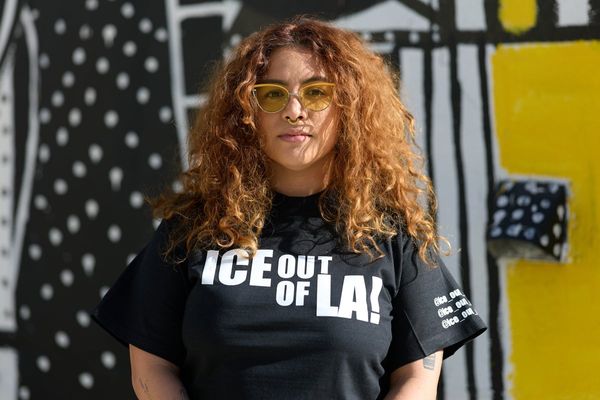
The great Renaissance artist Michelangelo signed only one of his works, the Pieta. The reason he signed it was simple, according to his biographer: He overheard people attributing the work to another artist and wanted to make sure he got credit for his masterpiece.
By the end of the Renaissance, most artists were signing their work. And the reasons for the practice went beyond pride. Artists realized that their signatures could make their work more valuable to collectors. And if a nobleman knew who had made a beautiful piece for a friend, they’d be more likely to commission a work from that artist for themselves. The signature fostered attribution and bestowed the story of the artist on the artifact. German artist Albrecht Dürer, recognizing how much his name increased the value of his prints, went so far as to petition a court to protect his signature.
But with the advent of digital art, the idea of signing creative work has largely been lost. Many digital artists don’t put a signature on their work, and if they do, it’s often viewed as an undesirable distraction in digital displays or social media feeds and is easy to remove with a few clicks. If a creator shares their work on their own social channels, the connection to them is clear. But as soon as someone copies the image and posts it, observers may have no idea who created it. And if the creator produces work for an agency or a corporation, there’s typically no attribution to the original artist. And that means creators lose more than just bragging rights. They lose out on future commissions. And an unscrupulous person can profit off their work—through engagement farming or otherwise—without their knowledge.
The quest for attribution in the digital world has been a longstanding passion of mine, since cofounding Behance in 2005, now the world’s largest creative community. We had a stated goal from day 1 of not only organizing the creative world at work, but also helping creative people get credit for their work. Over the years, I’ve seen over and over how vital attribution is to creative careers. Attribution leads to opportunity, whether that’s new commissions, a job, or a chance to partner with other creators you respect. So, it is essential that we reimagine attribution for the digital age—and especially the age of AI.
At Adobe, we’re leading a cross-industry effort through the Content Authenticity Initiative to develop a new approach to attribution: Content Credentials. Content Credentials are built on an open standard that allows anyone to securely attach information to digital content. That information can include who made the content and how, where an image was captured, and whether artificial intelligence was used to edit the image. Content Credentials travel with the content and can be recovered, even if someone takes a screenshot. It is not meant to punish those out to deceive us, but rather reward good actors who choose to share the provenance of content they make (their identity for attribution, the tools they used, etc.).
What started as just an idea over five years ago has become a widely adopted effort across multiple industries. Camera makers like Canon, Fujifilm, Leica, Nikon, and Sony are building the ability to apply Content Credentials right into their cameras. And major platforms where people consume content, such as TikTok, YouTube, Instagram, and LinkedIn, are beginning to support Content Credentials as well. As Content Credentials become more widely known and adopted, I think that attribution will come back into the creative world in full force.
I believe that ensuring artists get credit for their digital work will accelerate many creative careers. But that’s not the only reason that attribution is important. Over the past few years, we’ve seen an explosion of disinformation, content that’s been edited to deliberately mislead people. Like many downsides of the internet, disinformation thrives on anonymity. When you have no idea where anything comes from, it’s hard to know what to trust. Once creators can stand behind their work and proudly say, “I created this,” I believe people will become more skeptical—and rightly so—about content that no one is willing to claim as their own.
Similarly, I believe Content Credentials can play a crucial role for governments by helping to verify the origin and authenticity of the content they share with the public, thereby helping make critical communications to the public more trustworthy.
Finally, I believe attribution will play one more important role as generative AI increasingly becomes a part of the creative process: Content Credentials will showcase the human story behind digital art in the age of AI. Overall, I am optimistic about generative AI in creativity—I think it will allow creators to produce better work and spend more time exploring new ideas and less time manipulating pixels. But I also know some companies will use AI to produce an avalanche of generic, soulless content.
In response, I think people will come to crave even more the human connection to story, craft, and meaning in art. Attribution can help make it clear that a piece of content isn’t just machine-made. In fact, with Content Credentials, creatives can not only claim their work but share details about how they created it. Like the creator’s signature in the corner of the canvas, digital attribution can help connect us to the craft and the unique human story and perspective that makes art meaningful. Ultimately, in an era where content becomes ubiquitous, Content Credentials can evolve the “creator economy” to a “meaning economy,” in which the content with the most human-infused meaning is the most effective.
Read more:
- Canva cofounder: My AI predictions for 2025
- Elon Musk says AI has already gobbled up all human-produced data to train itself and now relies on hallucination-prone synthetic data
- Honeywell CEO: AI will transform industry at scale beginning in 2025
- Autodesk CEO: AI can help the U.S. fix its crumbling infrastructure before it’s too late
- Nokia CEO: Making AI greener starts with smarter data center design
The opinions expressed in Fortune.com commentary pieces are solely the views of their authors and do not necessarily reflect the opinions and beliefs of Fortune.







